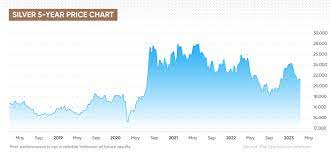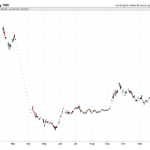Are you curious about what drives the price of silver? Dive into the world of silver markets and discover the key factors that influence its value.
From market demand and supply to economic factors, geopolitical events, currency fluctuations, and investor sentiment, this article examines the intricate web of influences that shape silver prices.
Gain a deeper understanding of the data-driven and objective analysis behind the silver market and uncover the symbolism that reveals the underlying forces at play.
Key Takeaways
- High demand for silver leads to an increase in price.
- Inflation rates and economic growth drive up demand for silver as a hedge against inflation.
- Geopolitical events can significantly impact the value of silver by affecting investor sentiment and global economic stability.
- Currency fluctuations, influenced by interest rates and economic indicators, have a significant impact on the value of silver.
Market Demand and Supply
You should consider the market demand and supply when analyzing the factors that affect the price of silver.
The price of silver is heavily influenced by the dynamics of its demand and supply in the market. When there’s a high demand for silver, its price tends to increase. This can occur due to various factors such as industrial demand, investor sentiment, and global economic conditions.
On the other hand, when the supply of silver is abundant, the price tends to decrease. The availability of silver from mining operations, recycling, and stockpiles can impact the supply levels.
Understanding the market demand and supply is crucial in determining the price of silver and predicting future trends.
Now, let’s delve into the economic factors that also play a significant role in shaping the silver market.
Economic Factors
If you’re interested in economic factors, keep an eye on how inflation rates impact the value of silver. Inflation is a key indicator of the overall health of an economy and has a direct impact on the price of silver. Here are three reasons why inflation affects the value of silver:
- Hedge against inflation: Silver is often seen as a safe haven investment during times of inflation. As the value of fiat currencies decreases, investors turn to silver as a store of value, driving up demand and subsequently increasing its price.
- Industrial demand: Silver is widely used in various industries, including electronics, solar panels, and medical devices. During periods of economic growth and high inflation, the demand for these products increases, leading to a higher demand for silver and a subsequent increase in its price.
- Monetary policy: Central banks often use monetary policy tools to combat inflation. When interest rates are raised to control inflation, it can have a negative impact on economic growth. This can lead to a decrease in industrial demand for silver, resulting in a decline in its price.
Geopolitical Events
Keep a close eye on geopolitical events as they can have a significant impact on the value of silver in the market. Geopolitical events refer to the political and economic actions taken by nations on a global scale.
These events can range from trade disputes, political tensions, or even military conflicts. The value of silver is influenced by these events because they affect investor sentiment and global economic stability.
For example, if there’s an escalation in trade tensions between major economies, it can lead to a decrease in demand for silver as investors become cautious. Similarly, geopolitical events that destabilize regions rich in silver reserves can disrupt supply, leading to a rise in silver prices.
Therefore, understanding and monitoring geopolitical events is crucial for investors in the silver market.
Currency Fluctuations
Understanding currency fluctuations is important because they can have a significant impact on the value of silver in the market. Here are three key factors to consider:
- Interest rates: When interest rates rise, the value of a currency typically appreciates, making silver more expensive for buyers in other countries. Conversely, when interest rates decrease, the currency’s value tends to decrease, making silver more affordable.
- Inflation: High inflation erodes the purchasing power of a currency, leading investors to seek safe-haven assets like silver. Consequently, increased demand for silver can drive up its price.
- Economic indicators: Currency fluctuations can also be influenced by economic indicators such as GDP growth, unemployment rates, and trade balances. Strong economic performance often leads to a stronger currency, affecting the value of silver.
Investor Sentiment
Investor sentiment plays a crucial role in determining the success of your investments. When it comes to silver, the sentiment of investors can greatly impact its price. As a silver investor, it’s essential to understand how investor sentiment can influence the market.
Positive sentiment often leads to increased demand for silver, driving its price up. Conversely, negative sentiment can result in decreased demand and a decline in price. To gauge investor sentiment, analysts often look at various factors such as market trends, economic indicators, and geopolitical events.





